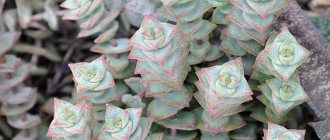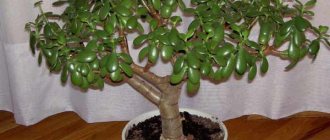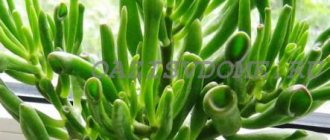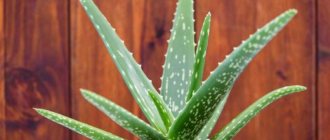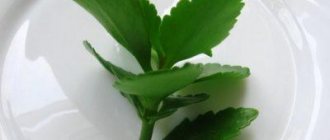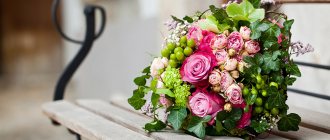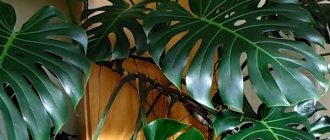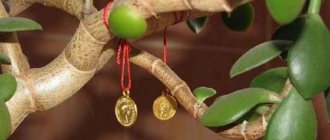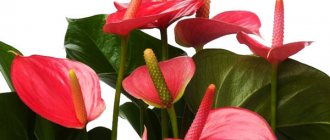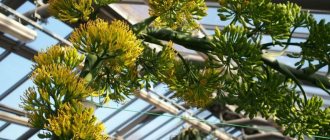One of the unusual succulents is the money tree. The flower is a popular plant to grow at home. The money tree belongs to the Tolstyankov family. Not everyone knows that the scientific name of the money tree sounds like Crassula.
Money Tree
What is another name for money tree? There are many popular names for the money tree: coin tree, tree of happiness, tree of luck, butterwort, crassula, ovata, crassula.
The money plant is called a money plant for two reasons. The fleshy, round leaves of the crassula resemble coins of different sizes. Another reason for such an unusual name is the belief that the flower brings prosperity and wealth to the family.
The Crassula plant is native to hot and dry Africa. At the end of the 17th century, a flower from African countries was brought to Europe. Since then, growing a coin tree has become popular among residents of many countries. In nature, crassula can be found in the South African regions, and some types of perennials can be found in Australia.
There are more than three hundred varieties of Crassula. In nature, the largest money tree can reach two meters and even four meters in height. Zhiryanka plant juice is healing and beneficial, capable of curing many diseases. Compresses, decoctions, tinctures, and ointments are made from fresh Crassula leaves.
Looking at the photo of an indoor money tree, you can understand why the flower was nicknamed a tree. The tree-like trunk of the money tree is clearly visible in the photo. The color of the trunk is brown or brown. The leaves are dense, fleshy, oval in shape. The surface of the leaves is smooth. The color of the leaf blades is rich green, but can also be reddish-green.
Money tree blossom
When and how does the money tree bloom? The flowering of the crop occurs in the spring. The succulent blooms quite rarely, approximately once every eight to ten years, but it pleases with its beauty for about three months. The color of the inflorescences is snow-white or soft pink.
general description
Crassula is a large genus of leafy succulents, most of which originate from the arid regions of South Africa. About 20 species are found in Australia, Tasmania, and other parts of the world.
Among the fat plants there are tree-like plants - with a trunk that hardens over time and a clearly defined crown; they are called money trees. But this is only a small part - the species and varieties are diverse, they can spread along the ground, form basal rosettes, rise above the ground to a small height and have no branches.
To survive in extreme conditions, stems and leaves sometimes take on bizarre shapes. Only specialists can understand the varieties of Crassula; amateurs can only determine the identity of the plants from photos with names.
But there are signs common to all species of the genus Crassula:
- thick leaves and shoots that store water for survival during dry periods;
- dense, shiny epidermis that prevents moisture transpiration;
- in the vast majority of varieties, the plates appear in pairs and are located oppositely;
- flowers are small, star-shaped;
- weak fibrous root.
Nurseries and greenhouses in Europe grow about 50 species of Crassula. But it is impossible to determine how many there are in the culture.
Cuttings from exotic countries are sent by mail and brought by tourists. They take root well, even if the stem is reduced to the state of a rag, they reproduce easily, and quickly disperse into cactus collections.
The soil
Planted in an earthen substrate for cacti. It is also advisable to ensure good drainage. Crassula is unpretentious; simple soil will do.
Transplantation is carried out every two to three years, or less often. Its pot should be heavy and deep so that it does not fall, but rather rests on weak roots.
Tree Crassula
It is this group of Crassulas that is called money trees. They branch well, have a clearly defined central stem, which over time partially or completely hardens and is covered with cork tissue.
If desired, the fat plants can be given the appearance of a bush, but without pruning they will grow to look like a tree. These types of money tree are easy to form as a bonsai.
Ovata (Ovate)
Ovata grows in the Cape and Natal provinces (South Africa). This is the most common type of crassula in indoor floriculture, found on almost every windowsill.
At home it grows relatively quickly, with proper care, without restraining pruning, it reaches a height of 1-1.5 m. The trunk is woody, succulent, and branches well.
The leaves appear in crosswise arranged pairs. The Crassula plates are whole, thick, fleshy, rounded at the top, with a wedge-shaped base. In bright sunshine, a red rim appears along the edge.
In nature, Crassula Ovata blooms in winter. When grown in pots, biological rhythms are disrupted; pinkish-white buds collected in loose umbrellas appear extremely rarely, sometimes in the summer.
Crassula Ovate is considered one of the easiest plants to maintain. She needs diffused light, room temperature, a drained, nutrient-poor substrate. Ovata's greatest fear is that the roots will become soaked.
This variety of money tree has a huge number of varieties. The vast majority can only be seen by amateurs in photographs and purchased only from professional cactus growers who exchange propagation material.
The reason is that the species is plastic; selection is carried out by private individuals along with large firms; new varieties of Crassula Ovata appear constantly. Some are easy to confuse, but they are different from others:
- name;
- border width;
- the shape of monstrous leaves;
- location, size of color strokes.
For example, when breeding a cactus plant with a red-yellow border, a cactus grower receives a specimen in which most of the leaf is golden, and the scarlet stripe stretches only along the edge. It fixes the trait, and the new varietal variety is ready.
A little about variegated Crassulas
The white color on the leaves is the result of a genetic malfunction; in Ovata it appears more often than other fat plants. It can be fixed by vegetative propagation and a variety can be developed that is almost completely devoid of chlorophyll.
But amateurs who received a white Crassula cutting for rooting should not rejoice - it will not take root. The fact is that discolored vegetative organs exist at the expense of green ones.
The less chlorophyll in a plant, the worse they eat and receive less plastic substances. This is why variegated fatworts develop slowly, have small leaves and are very capricious.
Varieties with many white areas are difficult to care for. In the sun they burn, they suffer more from excess or lack of moisture, and in the shade the green areas expand. If agricultural practices are violated, dark spots appear on the variegated plates, which do not disappear after normal care.
Monstrous varieties
Crassula with leaves of an uncharacteristic shape for the species. Appeared as a result of a gene mutation, the original characteristics were fixed during vegetative propagation. The most famous varieties were obtained by crossing the Ovata and Mlechnaya fat plants:
- Gollum - the variety is called “Shrek ears”, the plates are fused, forming an expanding funnel at the ends;
- Hobbit - leaves are turned outward, connected by edges at the base or to the middle;
- Coral - the plates have turned into thick tubes, tapering at the ends, sometimes there is a small depression at the top;
- Red Horn is a variety of the Gollum variety; in good light, the funnels turn yellow-red.
Some of the leaves of Gollum and the Hobbit are the same as those of the Coral Crassula - they are not rolled into a ball expanding from the base, but look like sticks. For propagation, vegetative organs that best correspond to the varietal characteristics are taken.
Monstrous varieties of Crassula grow slowly and have a compressed crown. They are easier to shape into bonsai style.
Sunset
A striking variety with strokes of yellow or white in the center of the leaf and a red border around the edge. From a distance, the Crassula may appear pink. The original color appears only at high temperatures and bright light. In the shade, Crassula turns dirty green.
If the variety has been away from sunlight for a long time, the varietal characteristics may not return after being moved to a bright place.
Minor
A variety of Ovata Crassula, characterized by slow growth, short internodes, and small leaves. Known by the incorrect name Compacta.
The plates are up to 4 cm long and, in good light, acquire a reddish tint with a darker rim. Unpretentious, with strong immunity.
Oblikva
Crassula ovata var. Obliqua is a natural variety, characterized by a triangular pointed top, curved surface:
- the tip is directed vertically;
- the sides are slightly drooping.
Because of this, the leaf appears to grow upward, and not perpendicular to the trunk, as in the species Crassula Ovata.
There are two variegated varieties, the color intensity of which depends on the lighting:
- Solana is unevenly painted with yellow or white strokes;
- Tricolor - the edges and back of the plate are pink or reddish, in the center there are variegated stripes.
Tree-like
- Arborescens is endemic to the Western Cape (South Africa). The species is less common and more capricious than Crassula Ovata: it is demanding of light and tolerates waterlogging less well. In cultivation it grows up to 1.5 m, the trunk is woody, succulent, branched, the leaves are almost round, up to 7 cm long and 5 cm wide.
The plates are fleshy, greenish-gray in color, with a thick epidermis, located in the same way as in the Ovata Crassula:
- two opposite leaves emerge from one node;
- relative to the nearest pairs they are shifted by 45°.
With sufficient lighting, the plates are reddish along the edge and from the inside. The stomata are clearly visible - whitish dots are scattered over the entire surface. At home, Crassula rarely blooms and is used to create bonsai.
There is a natural variety called undulatifolia with thinner, silver-blue leaves that have a slightly wavy edge. There is a variegated form and the Blue Bird variety. The latter has a more saturated color, the plates curl more strongly.
Sarcocaulis
Sarcocaulis, a species popular in America and Western Europe, is not yet widespread in the post-Soviet space. It is distinguished by a curved trunk and small leaves, which is why it received the name Crassula bonsai.
It is a small shrub with a woody central shoot; in cultivation it reaches a height of 50 cm.
The leaves are juicy, green, narrow, and from a distance they resemble pine needles. Purple buds and pink flowers rarely appear at home.
Difficulties
Problems during cultivation rarely occur.
If it drops a leaf, it means there is not enough moisture. It is good to irrigate the flower with warm water, a little warmer than room temperature.
In winter, they monitor it especially carefully, because it is difficult to determine how much moisture is needed. If you pour too much, it turns pale, and if not enough, it wrinkles and darkens, and brown spots may appear.
Specks may indicate a fungus; if they also become soft, treatment with special preparations will be needed.
The succulent turns black on the bottom due to root rot. It is dug up and damaged roots are cut off, then planted in fresh soil.
A long and ugly trunk can be found in a fat plant growing on a poorly lit balcony or in a heavily flooded plant.
It rarely needs to be treated for pests; they do not often affect the succulent, like many other diseases.
Columnar species of Crassula
These Crassulas look nothing like money trees. The central stem is single or poorly branched. The group includes species that really look like a column, or grow vertically. The latter sometimes reach a great length without pruning, hang, turning into ampelous ones.
The leaves of columnar (spike-shaped) Crassula are opposite, thick, the bases clasp the stem and grow together. They are compact in size and form dense clumps over time.
Hairy
Pubescens can, depending on the variety, be classified as both columnar and groundcover crassulas. It is a succulent that at a young age resembles a rosette with a shortened stem; over time it turns into an erect, weakly branching bush. In nature it reaches 40 cm, much lower when grown at home.
The species attracts attention with its pubescent thick leaves up to 3 cm long. The shape is elongated-oval, widening towards the end. The peduncle rises above the rosette.
There are 3 varieties:
- pubescens – velvety plant, the description matches the main species;
- radicans - with smooth thin leaves and lodging shoots;
- rattrayi is practically never found in cultivation.
Rocky (Broad-leaved)
Rupestris is a picturesque common type of Crassula that grows and forms a dense clump. The shoots are erect, fleshy, branched, reach 60 cm without pruning, droop, and become ampelous.
The leaves are bluish-green, becoming reddish along the edges in bright sun. The plates of the Crassula appear triangular, but are actually oval with a sharp end, the base encircling the stem. Length from 1 to 2.5 cm with a width of 1-2 cm.
Buddha Temple
C. Buddha`s Temple is one of the most spectacular and original cultivated crassulas. The plant of the species is a slender column assembled from leaves resembling squares with corners turned up. The plates are pressed tightly against each other, in fact they are oval at the base, up to 2.5 cm wide
When viewed from above, the Crassula resembles a stylized cross or pagoda and grows at a rate of 3-5 cm per year. Over time, the main stem lengthens and bends, which only adds to the exotic look.
Watering
The fat plant is watered 1-2 times a week in the summer, no more often, it is accustomed to droughts. Care in winter is different - in cold weather you should water less often. No spraying required, just clean leaves.
The humidity in the rooms is not important; she feels quite comfortable in the apartment in winter, when the heating is on and the air is dry. Regular ventilation will be beneficial.
Creeping Crassula species
The group includes fat plants with soft lodging shoots, growing quickly and occupying a large space. They can be grown separately in wide flat pots, included in compositions, or planted as a cover plant to large succulents.
Mossy (mossy)
Muscosa, synonym Lycopodioides, may belong to the previous group. A popular species with a shallow root system. The shoots are thin, soft, and due to the many small lettuce leaves clasping the stems, they appear tetrahedral.
The young plant stretches upward, the adult forms a chaotic bush 15-20 cm high, producing tiny greenish-yellow flowers. Often forms roots on shoots. Shade-tolerant, undemanding species, easily propagated, develops quickly, and literally falls out of the pot after a few years.
Milky
C. Lactea in cultivation reaches a maximum of 30 cm. It is an ampelous plant with brownish shoots, obovate leaves, pointed at the end, 3-4 cm long, 2-3 cm in cross section.
The plates are soft green and fleshy. The peculiarity of the species is that white dots of salt from the evaporated liquid protrude along the edge.
Crassula is very easy to grow, suitable for beginners. She is one of the ancestors of the famous monstrous varieties of fat girls Gollum and Hobbit.
Spot
C. picturata is distinguished by lodging, well-branched stems. The leaves are small, 15 mm long, 8 mm wide, green. The front part of the plate is covered with red specks, the reverse – purple.
Grouped
C. socialis is a type of groundcover Crassula. Thin soft shoots branch strongly, spread, the ends are raised, which is why it seems that many tiny rosettes are growing in the pot.
Flat lettuce leaves, the tip of which forms an obtuse angle, reach 5 mm in length, decorated with almost imperceptible thin cilia that extract moisture from the air. Crassula of this species grows quickly, sometimes producing small pinkish-white flowers.
Cooper
C. Cooperi is a fat plant with lodging stems up to 15 cm long. The leaves have a sharp tip, are surrounded by villi along the edges, and grow in a spiral. The color is silver with light green specks and a rim.
There is a variety of Crassula cooperi Regel with a brown-green background and purple spots.
Reproduction
It is propagated using leaf cuttings. They need to be dried for a couple of days and then planted in the ground. Most likely she will get used to it.
A more reliable, although time-consuming, method of planting is to root the shoot in liquid. Crassula loves light - on a well-lit windowsill it will produce roots faster. Then it is transplanted into the prepared container.
Decorative flowering species of Crassula
This is how the group can be called conditionally; in fact, all Crassulas produce buds, they just do it reluctantly in apartments. The varieties described below often produce flower stalks in pots if maintained correctly.
Typically, flowering time occurs in winter. But, if the fat plant is placed outside in the spring, buds may appear at the end of summer.
Crescent
C. Falcata is an interesting species with decorative leaves and flowers. Crassula is a plant with a slightly branched straight stem and large, up to 10 cm, fleshy leaves covered with a bluish coating. It got its name due to the shape of the elongated plates. Umbrella inflorescences are dense, up to 20 cm in diameter, red-orange.
In nature, the height of the Crassula reaches a meter; when grown at home, it is much less. Moreover, after the buds wither, the crassula is cut down to the first developed leaf. When side shoots appear, they are separated and rooted, the rest of the plant is cut into cuttings.
Schmidt
C. Schmidtii - the species can be classified as a ground cover Crassula. Widely distributed in Europe, grown as an annual for its beautiful flowers. Refers to bouquet plants - after the buds wither, they are usually thrown away.
Crassula Schmidt forms a dense, low (up to 10 cm) bush with light green leaves, reddish on the inside. They are fleshy, narrow, elongated, pointed at the end, the stems have a pink tint.
Carmine flowers. There are varieties that differ in the color of the leaves or with raspberry buds.
Perforated
Perforata grows up to 20 cm, the stems are uneven, hard, erect. Every year, usually in winter, but sometimes from June to October, white, pink or red inflorescences appear at the ends of Crassula shoots.
But the main attraction of the species is the rhombic leaves, up to 2 cm long, fused at the base and covering the shoots. They are a delicate light green color with a silver or olive bloom; in bright light, the outer side is often dotted with red dots.
The Perforata species is an easy-to-care, unpretentious Crassula that can be easily propagated by pieces of shoots. Can be grown as a hanging plant.
Does Crassula bloom at home?
It is not difficult to achieve flowering of the money tree, you just need to ensure proper maintenance and care. And they are somewhat different from those to which both people who do not pay attention to the fat plant at all and who carefully form the crown are accustomed.
If the owners want to see a blooming money tree, they will have to postpone pruning the crown and straightening the trunk for some time. Or wait until the plant is fully formed.
Flowering of common Crassula species - Tree, Ovate - begins at the age of 5 years or more. Owners who do not care for the plant are unlikely to see the fat plant bloom.
Often the buds do not appear indoors, but when the pot with the money tree is taken outside, or planted in the ground for the summer. Often, owners living in apartment buildings take shoots and place the plant, which has lost its attractiveness, on a sunny window between floors. And after a while they are surprised to discover that it begins to bloom.
Types of Crassulas without category
There are Crassulas that are so original that they are not suitable for other groups. It's hard to believe that they belong to the same genus as Ovata or Lycophytes.
Meat-stem
Umbella in cultivation is represented by a variety called Wine Cup - a wine cup, which is extremely rare. The species is listed in the Red Book.
This Crassula is a geophyte, a plant with a tuber about 1.5 cm in diameter, which experiences a particularly unfavorable dry period in the soil. The plates are bright green, reddish on the reverse side, juicy, but seem thin.
They look like a concave leaf of a water lily, in fact it is 1 or 2 adjacent pairs that have grown together, forming an almost perfect cup. The edges of the “vessel” can be raised up or bent. A thin, pale, reddish stem emerges from the center of the fused plates.
The inflorescence is paniculate, rises 10 cm above the upper “bowl”. The carmine buds, having blossomed, become pale pink.
White
Alba is an original species that bears little resemblance to the Crassula. Forms a rosette with a diameter of about 15 cm from succulent, but not thick, as for a succulent, leaves. Their color changes from pale light green with green spots in the shade to gray, decorated with purple strokes in the bright sun.
Before flowering, Crassula grows neatly, the stem is short. After the buds wither, it stretches up to 30-40 cm, sends out daughter rosettes that take root easily, and then dies.
Form
Succulents are ideal for decorating offices, hospitals, cultural institutions and administrative buildings, and for banks.
It is more difficult to grow a tree than a bush, since a lot of time is devoted to the formation of the crown.
It is formed as early as possible. To do this, they begin to remove the side shoots until it reaches a height of 25-30 centimeters. Half of the trunk remains bare. At this time, it is not very attractive in appearance.
Then they pinch off the top and it will again begin to send out side shoots, which will become the new crown. Keep turning it constantly so it doesn't start to move. The first variety does not require such effort; it grows itself in the form of a tree.
Flower varieties
Crassula is very common in home floriculture (according to some versions, it is one of the five most popular flowers). For this reason, dozens of completely different species are grown indoors. Some of them are more popular than others.
Crassula Oval
The most common variety for cultivation outside the wild . The strengths of this Crassula are its amazing unpretentiousness to lighting and watering, a wide variety of colors and shapes of foliage.
Perhaps the most common are leaves with a reddish border, although plants with silvery foliage (in fact, light green with a silvery tint) - even more reminiscent of coins - are gaining more and more followers.
Tree Crassula
Tree varieties are decorative, neat, attractive. These qualities are valued in them first and foremost. Secondly, Tree Crassula is also distinguished by its relative unpretentiousness.
In captivity, this species rarely blooms.
Photo
Next you can see a photo of Crassula Tree-like:
In separate articles you can see photos and find descriptions of other species of this beautiful and unusual plant. Read about these: Minor, Silver, Sunset, Moss, Portulaca, as well as Crassula Perforata, Ovata, Buddha Temple, Hobbit and Gollum.
Benefits and harms
In addition to the mystical qualities of attracting gold, the fat plant has very real and tangible healing properties.
First of all, it is a filter plant. It releases phytoncides that disinfect the room, killing bacteria, viruses and fungal infections. This is another reason to decorate the halls of hospitals, clinics or pharmacies with this flower.
Crassula should not be taken orally; it contains a dangerous poison - arsenic.
External use is not prohibited. Its juice is good for treating many diseases. Here are some tips:
- For sore throat and stomatitis: squeeze several leaves into a cup or glass, dilute with boiled water and use for rinsing. You can rinse your mouth and throat up to 5 times a day.
- For insect bites, herpes, abscesses, bruises, cuts, lotions are used. Pound a few leaves in a mortar until they become a paste. A sterile bandage soaked in it is applied to the sore spot. In particularly difficult cases, the bandage can remain on the wound for up to 4 hours. The remedy is especially effective for muscle sprains and bruises. It is completely natural and, unlike pharmaceutical ointments, cannot cause an allergic reaction.
- If there are herpes on the lips, then every half hour they should be lubricated with Crassula juice.
- For joint diseases, arthritis, arthrosis - rubbing before bed.
- For calluses – peel the sheet of film and attach it with a band-aid.
A plant that can give positive emotions and abundance, is beautiful and useful is not at all difficult to grow. The main thing is to give it a bright, spacious place and minimal moisture.
Homeland of the plant
The money tree is widespread throughout the world - it is found in nature and grown artificially. For a long time, the western part of South Africa was considered the birthplace of the Crassula. This is where this succulent is common in nature. But scientists still have different opinions about the plant’s homeland.
On a note! Succulents are plants that can survive for a long time without watering due to special tissues in which they store moisture.
Later, botanists discovered that several species of Crassula come from the island of Madagascar. But the flower called the money tree, which is loved by flower growers all over the world, comes from South Africa. From here the plant gradually migrated to other places. It first appeared in North America, then conquered Asia and other countries.
The following also claim to be the homeland of the Crassula:
- Near East. It was here, in the Arabian desert, that round coins, which are so similar to the leaves of the crassula, first appeared.
- China. The plant received its “money” name during the Han Dynasty. At the same time, the first legends about the Tree that made people rich appeared. The “Chinese trace” of the fat woman is confirmed by its copies made of bronze and faience. True, round coins were not in use in the country in those days.
To survive in the harsh, arid climate, the Crassula stores up water during the rainy season. She accumulates it in thick foliage.
Legends about the flower or why it is called the “Money Tree”
The most common name for Crassula is “money” or also “dollar” tree. This epithet has taken root because the leaves of the plant resemble coins , and they have always been a symbol of wealth and success.
According to another version, the association of a fat wallet, and therefore prosperity, is caused by the trunk of the plant. This flower is thick and dense.
In many ways, all known theories are also supported by the fact that Crassula is a succulent plant, that is, it has the ability to accumulate moisture and nutrients in the roots, leaves, and trunk. That’s why people associate this plant’s ability to collect and preserve what is most important to them with signs about luring money into a wallet with a flower and accumulating wealth.
THIS IS INTERESTING. Particularly superstitious people, even when planting a money tree cutting or replanting a plant, put a coin in the pot for good luck. Sometimes coins are hung on the shoots of the Crassula.
You can also turn to ancient legends. Thus, the money tree was brought back to Ancient China. In this centuries-old culture, the flower was treated with care, they believed that with its energy it brings abundance, wealth, and success.
More interesting beliefs associated with the flower can be found in our article “What signs and superstitions about the “Money tree” (crassula) do you know? Can the plant be kept at home?
